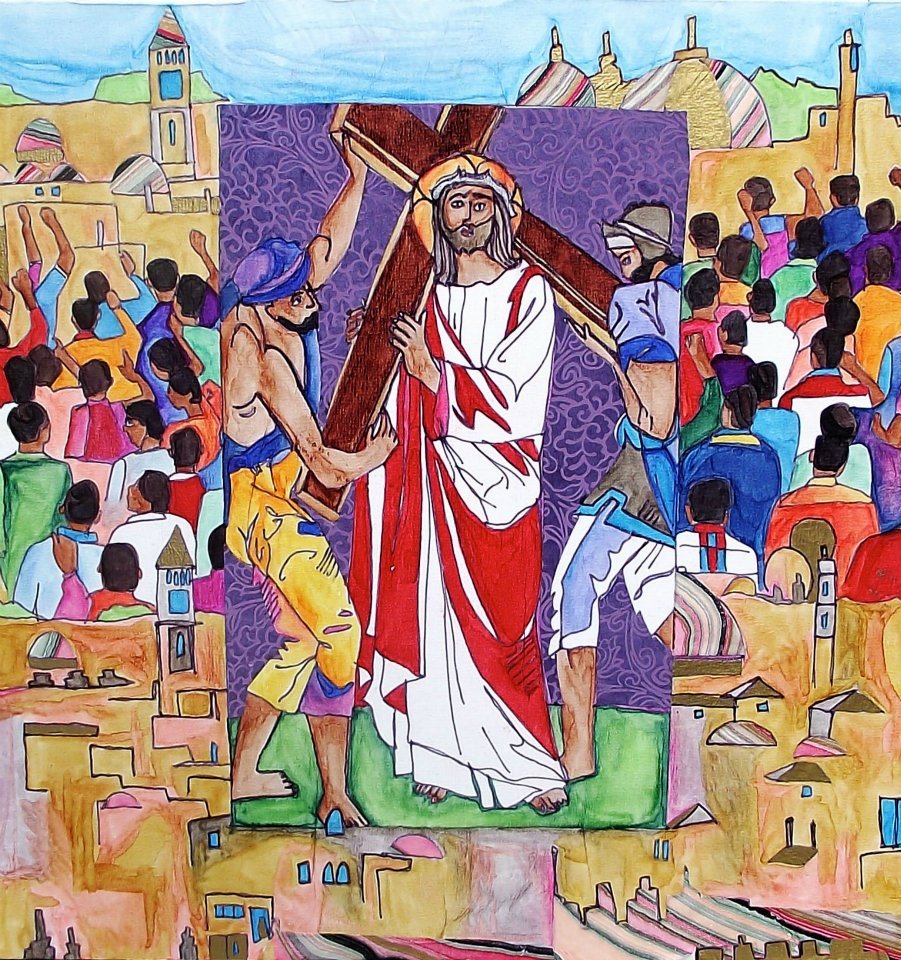Day Three
I work in series. I think it’s a photography thing. Photography was my first love and my college major. And to get one really good photograph, you often have to take a couple hundred first. I rarely create one-off artworks except in the case of commissions. And in the case of the Stations of the Cross, I’ve often thought of them as series within series. Every year, every topic, a new approach to an ancient format and story. And, as fundamentally important as my first Stations of the Cross series was for me personally as an introduction into how to engage with the narrative, it is a mess. If creating these works is like cooking, that series is the misshapen pancake that you have to get out of the way before you have a real handle on the griddle.
It’s with my second attempt at the Stations of the Cross that I began to feel like I had a *little* bit of a handle on the format. I created my first series in 2010 while in graduate school, then was fully immersed in my thesis project in 2011. So there was a two year gap between the first two projects. I created my second series in the spring of 2012 while I was working as the Minister of Visual Art at First Congregational Church (UCC) in Memphis, TN. The work addressed the Syrian uprising at a time when the news media in the United States at that time was preoccupied with nonstop coverage of the 2012 election cycle. I began this series out of a sense of frustration that the voices of our Syrian siblings calling out for help were being drowned out by endless news coverage about the U.S. election.
These are the first two stations in the series Stations of the Cross for Syria. Each station depicts events of one day in the first year of the Syrian uprising. The series went on display during Holy Week with the last three stations depicting events of that week. It is the only one of my stations series that depicted events as they unfolded.
January 26, 2011: Jesus is condemned to death by Pilate
Hasan Ali Akleh from Al-Hasakah poured gasoline on himself and set himself on fire. Witnesses to the self-immolation described the action as an act of rebellion against the Syrian regime. Two days later protesters gathered in Ar-Raqqah to protest the killing of two soldiers of Kurdish descent. On February 2, 2011 protesters called for a “Day of Rage” from the 3rd-4th, these protests used many social media sites, especially Facebook and Twitter. The demands of the protestors start to take shape. One of the main goals was ending Syria’s emergency law which effectively suspended most constitutional protections. The law designated the prime minister as the martial law governor of the country, giving him almost absolute power. Other demands include: resignation of Bashar al-Assad, recognition of Kurdish rights, and abolition of the Supreme State Security Court. The poster being held by the little girl reads: “O Arabs, Syrian people slaughtered.”
March 15, 2011: Jesus Accepts His Cross
March 15th is also declared a “Day of Rage” and simultaneous demonstrations took place in cities all across Syria. In Damascus, a group of 200 men grew spontaneously to include over 1,500 people. There were supportive demonstrations in Cairo, Nicosia, Helsinki, Istanbul, and Berlin.
Eight years after I finished this series, I created Stations of the Cross: Refugee Journeys (2020). That series includes several stations addressing the refugee crisis caused by the civil war in Syria. In tomorrow’s post, I’ll discuss how Stations of the Cross for Syria came to influence all of the work that followed.


